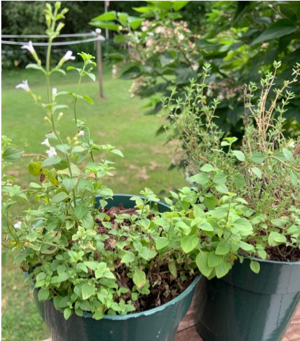Change of Seasons
go.ncsu.edu/readext?727501
en Español / em Português
El inglés es el idioma de control de esta página. En la medida en que haya algún conflicto entre la traducción al inglés y la traducción, el inglés prevalece.
Al hacer clic en el enlace de traducción se activa un servicio de traducción gratuito para convertir la página al español. Al igual que con cualquier traducción por Internet, la conversión no es sensible al contexto y puede que no traduzca el texto en su significado original. NC State Extension no garantiza la exactitud del texto traducido. Por favor, tenga en cuenta que algunas aplicaciones y/o servicios pueden no funcionar como se espera cuando se traducen.
Português
Inglês é o idioma de controle desta página. Na medida que haja algum conflito entre o texto original em Inglês e a tradução, o Inglês prevalece.
Ao clicar no link de tradução, um serviço gratuito de tradução será ativado para converter a página para o Português. Como em qualquer tradução pela internet, a conversão não é sensivel ao contexto e pode não ocorrer a tradução para o significado orginal. O serviço de Extensão da Carolina do Norte (NC State Extension) não garante a exatidão do texto traduzido. Por favor, observe que algumas funções ou serviços podem não funcionar como esperado após a tradução.
English
English is the controlling language of this page. To the extent there is any conflict between the English text and the translation, English controls.
Clicking on the translation link activates a free translation service to convert the page to Spanish. As with any Internet translation, the conversion is not context-sensitive and may not translate the text to its original meaning. NC State Extension does not guarantee the accuracy of the translated text. Please note that some applications and/or services may not function as expected when translated.
Collapse ▲The new normal is taking some getting used to. However, some things stay the same and can give us something reliable to look forward to. The seasons change and Autumn is on the way. Each season has both an astronomical start and a meteorological start. Astronomically speaking, Tuesday, September 22, 2020, Autumn begins. The Astronomical start date for Fall, otherwise known as the Fall equinox, is based on the position of the Sun in relation to the Earth. The meteorological start date is based on the 12-month calendar and the annual temperature cycle.
On the equinox, day and night are roughly equal in terms of length, changing a bit depending where you live. The autumnal equinox marks the beginning of Fall in the Northern Hemisphere and Spring in the Southern Hemisphere. The Northern Hemisphere gradually receives less of the sun’s rays over time and also experiences less daylight hours. This ends with the December solstice, when days start to grow longer and nights shorter.
Climatologists usually use full months to represent the seasons. Climate scientists and meteorologists created this definition to make it easier to keep records of the weather, since the start of each meteorological season doesn’t change from year to year. Winter is considered December, January, and February; spring is March through May; summer is June through August; fall or autumn is September through November. Here in Lee County the warmest Autumnal Equinox was recorded on September 23, 1970, with a max temp of 91°F, and minimum of 69°F. The coldest was recorded on September 23, 1963, with a max of 67°F, and minimum of 38°F.
As temperatures cool off a bit, the early morning hours can bring peace and satisfaction getting your fingernails dirty. Herb gardening does double duty at our house. Spice and fragrance in the kitchen and rejuvenation in and from the garden.
Many herbs grow better in late summer to early fall. The soil is still warm but not at “oven temperatures”. While I still have some Thai basil growing, my go-to herbs are the perennials: thyme, sage, rosemary, oregano, marjoram, and lavender. They are also some of the plants that I use as evergreen ground covers and pollinator plants, so you can say they’re quadruple -duty performers!
My planting site is sandier soil so it works well for herbs such as lavender, rosemary, and thyme because they like to be drier. Others such as basil and parsley need more water. Make sure you know individual needs of the herbs you want to try.
If you want to try some indoors consider chives, parsley, mint, oregano, and

Container Herbs
tarragon in the right light. A south or west-facing window that gets at least 4-6 hours of direct sunlight a day (not where they will burn) will give you some spices
for the kitchen this fall and winter. A grow light will increase yields and allow you to keep an herb garden on a countertop or kitchen shelf.
Don’t forget to use a good potting mix that drains well in a container with drainage holes so the roots don’t stand in water.
Minda Daughtry is the Horticulture Agent for North Carolina Cooperative Extension in Lee County.




